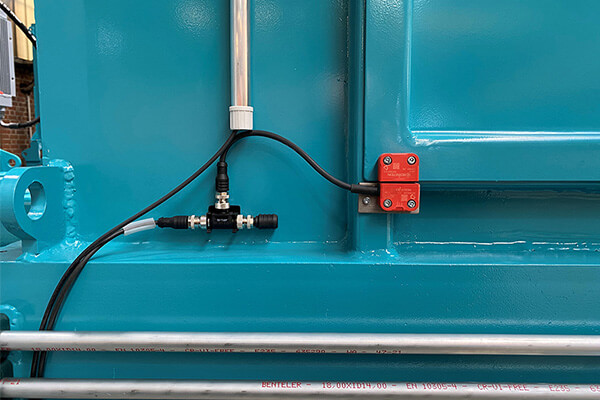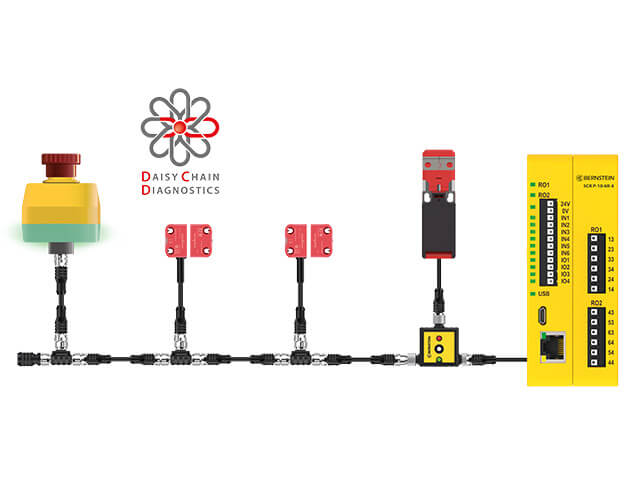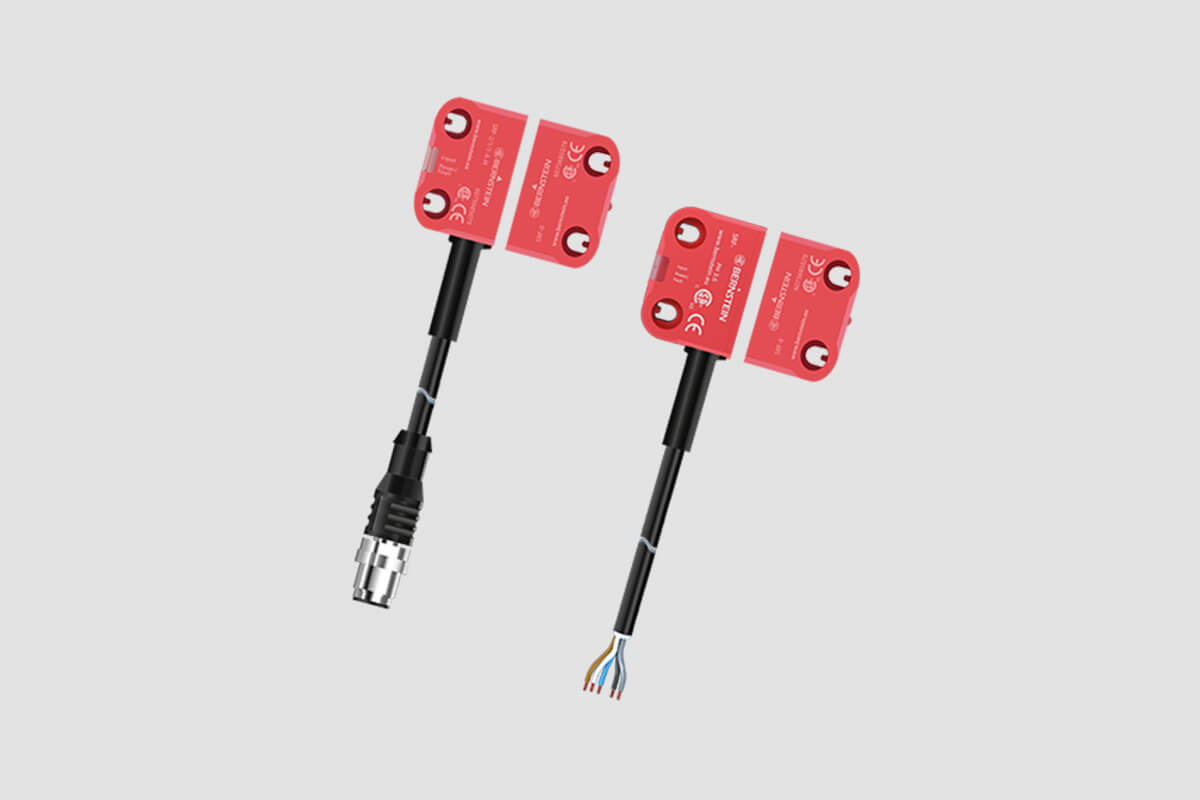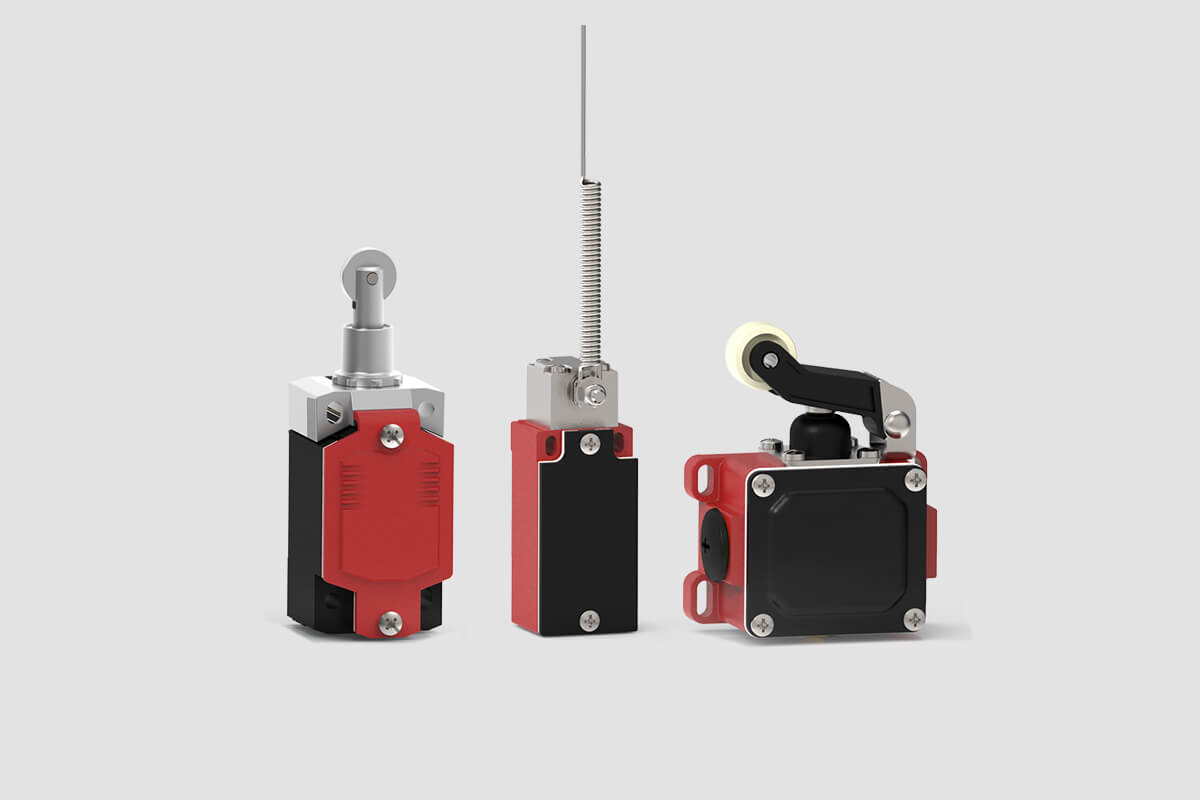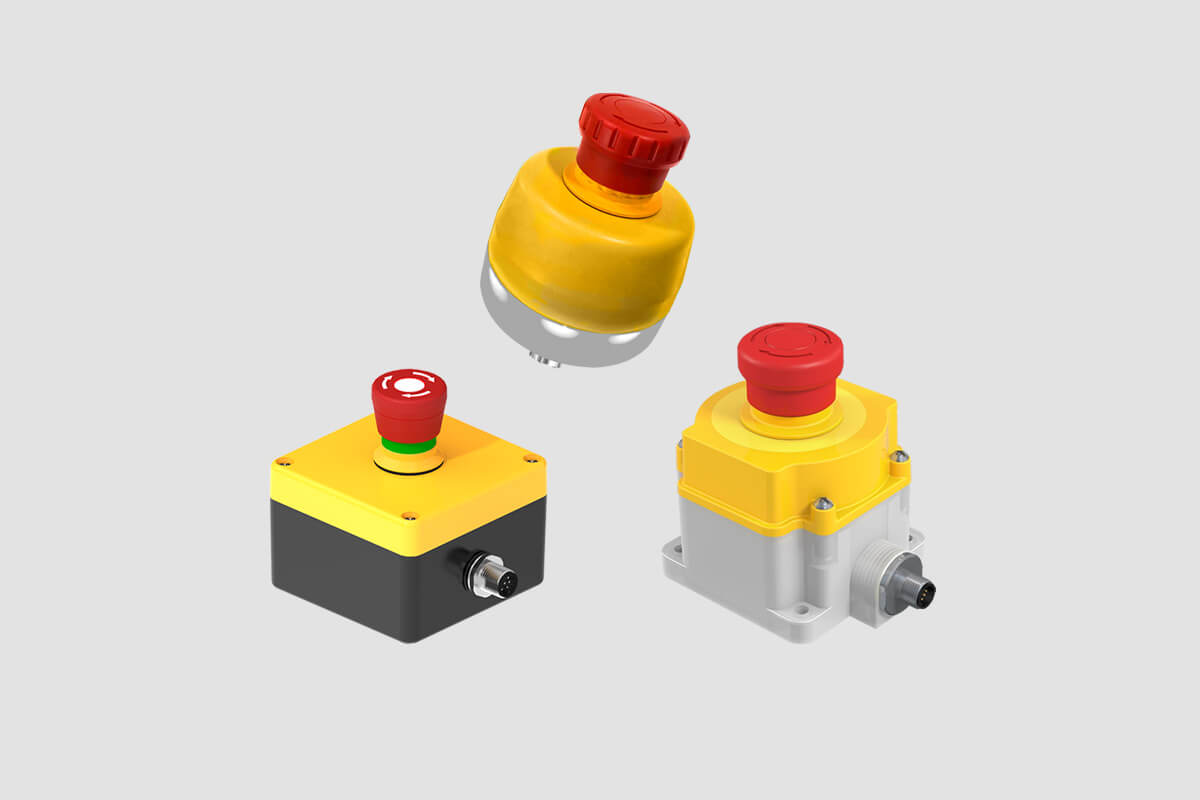The safety of machines and systems is a critical aspect in industry. Legal requirements demand that machines are designed to minimize the risk to life and limb.
An essential part of this is the effective monitoring of safety gates, which both regulate access to hazardous areas and ensure that maintenance access is possible under safe conditions.
Topic overview
1. Basics of safety gate monitoring
1.2. Classic vs. smart monitoring methods
1.3. What is a safety switch with guard locking?
1.4. What is a position switch?
2. Non-contact safety technology and its advantages
2.2. Coding and tamper protection
2.3. Integration in the SMART Safety System
Basics of safety gate monitoring
A safety gate is a movable safety guard that only allows dangerous machine movements when it is securely closed. These doors are essential as they keep operators and employees away from dangerous components and processes.
But how exactly is such a safety gate monitored and what technologies are used?
Classic vs. smart monitoring methods
Traditionally, mechanical position switches are used for safety gate monitoring, which use direct contact to detect whether a door is open or closed. However, these switches are susceptible to wear and tear and can fail if used frequently.
Contactless safety sensors offer an innovative and increasingly popular alternative. These sensors use modern technologies such as RFID to detect the status of the door without the need for direct contact. This increases the reliability and service life of the monitoring systems.
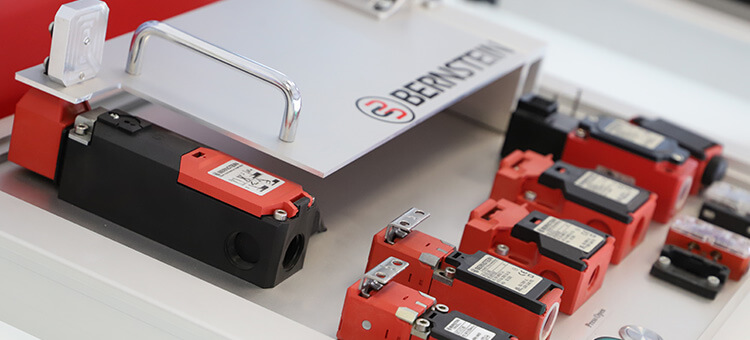
What is a safety switch with guard locking?
Let's imagine a large flywheel mass. Or a trailing saw blade.
It is imperative that the operator is denied access until the dangerous movement has come to a complete stop.
The interlocking switches are equipped with an opening into which a suitable actuator - attached to the frame of the corresponding safety gate - can be inserted.
The door is kept locked until a safe state is reached.
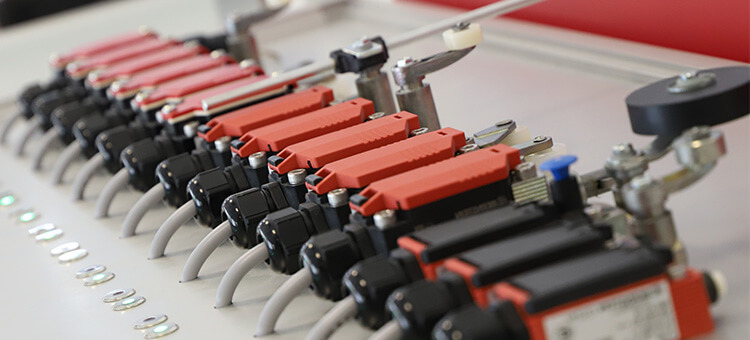
What is a position switch?
A position switch consists of an actuating head and a contact block.
If a safety gate comes into contact with the actuating head when it is opened or closed, an electrical connection is established or interrupted.
This enables the switch to recognize the position of the safety gate.
In turn, it can then pass on the corresponding signal, such as stopping the machine.
Non-contact safety technology and its advantages
Non-contact sensors, such as the SRF developed by BERNSTEIN, offer numerous advantages. They are wear-free, as they do not require mechanical contact, and they are less susceptible to misalignment, which can occur over time due to sagging or warping of doors.
They also offer a high level of tamper resistance, as the sensors cannot simply be bypassed or manipulated with everyday objects.
Coding and tamper protection
A key aspect of modern machine safety is the prevention of tampering. This is where the coding of the actuators comes into play.
Modern safety sensors such as the SRF are available with different coding levels that make it almost impossible to outwit the systems. These coding levels range from low to high and are designed to ensure that tampering is not possible without specific tools or knowledge.
Integration in the SMART Safety System
The SMART Safety System from BERNSTEIN enables the integration of safety gate monitoring systems into a comprehensive safety network.
This system not only allows the simple connection of classic mechanical components, but also modern, electronic emergency stop switches, which further increases safety and simplifies installation.
The future of safety gate monitoring
As technology advances, safety gate monitoring is also becoming increasingly intelligent.
The aim is to develop systems that are not only safer, but also support predictive maintenance strategies.
These should help to detect impending problems before they lead to failures, which ultimately reduces operating costs and increases efficiency.
Conclusion
The decision for the right technology for safety gate monitoring should always be tailored to the specific application.
Classic position switches and modern non-contact sensors each offer specific advantages that come into play in different industrial scenarios. By understanding their respective strengths and limitations, companies can optimize the safety level of their systems.
The SMART Safety System from BERNSTEIN offers a comprehensive range of solutions that make the monitoring of safety gates safe and efficient.
